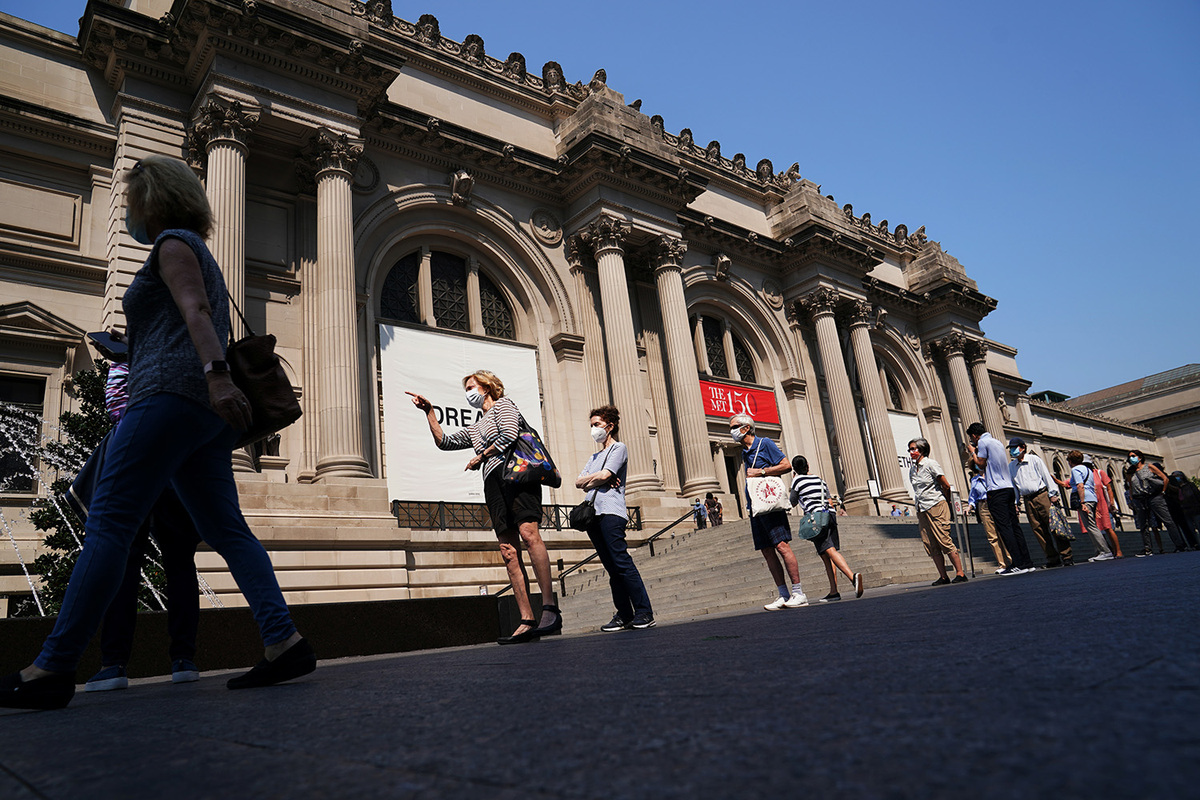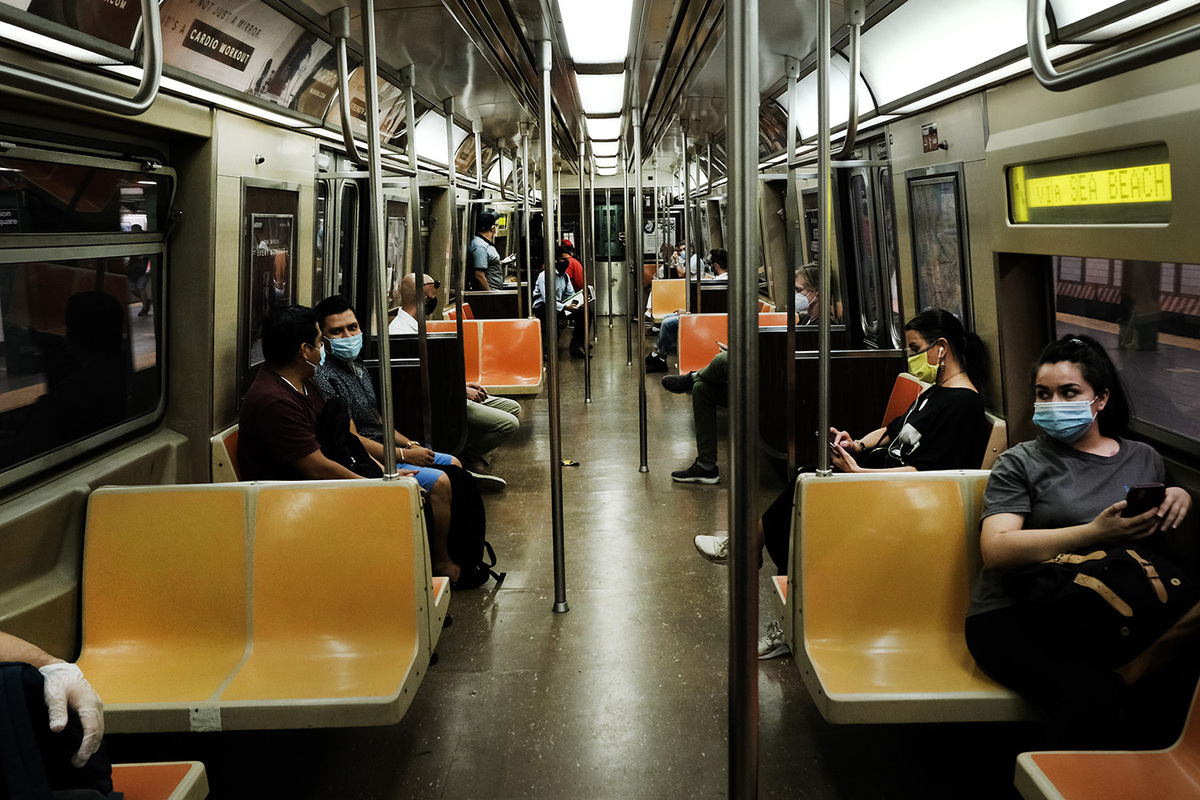New York faces comeback hurdles


Subway use falls
The city's subways and buses have been disinfected daily for months, but ridership on subways is down by 75 percent. Transit system officials are forecasting a $10 billion deficit for next year and say they need $12 billion in federal aid, or riders could face fare hikes and service cuts.
While tourists are staying home, thousands of New Yorkers and their children have left. Nobody knows for sure how many have new postal codes in the Hamptons, Connecticut, New Jersey, upstate New York and elsewhere.
In July, signed contracts for condos in Manhattan were down by 56 percent from last year and co-op apartments were down by 57 percent, according to a report from real estate brokerage Douglas Elliman and appraisers Miller Samuel.
Deals for homes in suburban areas surrounding New York City have surged. Pending sales for single-family homes on Long Island in July were up by 41 percent; in Fairfield County, Connecticut, they rose by 73 percent; in Westchester County, New York, they climbed by 112 percent; and in the Hamptons they were 121 percent higher.
"They all tell the same story," said Jonathan Miller, president of Miller Samuel and author of the report."The outlying areas around the city are benefiting from outbound migration of Manhattan specifically."
"Fair-weather friends," Mayor Bill de Blasio said of those who have left town. "This city is for New Yorkers who live here, who work here and fight to stay here."
New York Governor Andrew Cuomo, who shut the state down in March, has pleaded with New Yorkers to return: "You gotta come back. When are you coming back? We'll go to dinner. I'll buy you a drink. Come over. I'll cook."

So many people have left that the number of vacant apartments-especially in Manhattan-is the highest in a decade. In June there were 52,700. An additional 67,300 became available in July.
More vacancies mean lower rents. A report by Douglas Elliman last month showed a 10.1 percent decline in Manhattan rents in July to an average of $3,167, the biggest annual drop in almost nine years of record-keeping. But just as rents are lower, so are the number of apartment hunters, real estate brokers say.
"We're stuck with inventory," said Merih Morgan, owner and broker at City Zen Realty in Manhattan.
The city attracts thousands of students to its colleges and universities, including Columbia University, City University of New York, New York University and Cornell University's Weill Medical College.
However, many schools will offer online classes this fall to limit spread of the coronavirus, eroding the demand for apartments as well as services from scores of stores.
There are also fewer jobs. The city's unemployment rate rose to 20.4 percent in June from 18.3 percent in May, according to the US Bureau of Labor Statistics.
Many of the jobless are young. More than two out of every five unemployment claims filed in New York state since late March were submitted by workers under 35. Their places of work have gone out of business or shut down indefinitely.
Facing pressure from thousands of constituents calling to defund the police, New York City slashed $1 billion from the police budget. The department is the largest force in the US and employs over 55,000. Its budget was almost $6 billion for the 2020 fiscal year.
The city has seen a surge in shootings and other violent crime amid the new coronavirus pandemic.
So far this year, there have been more than 900 shootings, nearly double the 492 by this time in 2019. Police have made 180 fewer gun crime arrests this year than last. Arrests in murder cases have fallen by 9.5 percent from last year, and robbery arrests dropped by 11.1 percent.
The cost of health services for the pandemic and the loss of tax revenues from shuttered businesses have put state and city budgets in dire straits.
Cuomo estimated that the economic fallout from the coronavirus and lower tax revenues have put a $30 billion hole in the next two state budgets.
The state will face budget cuts in the 20 percent range, enough to devastate school aid, subway subsidies and other vital services. The city cuts could be even sharper.
The mayor has set October as the date for implementing his threatened 22,000 layoffs of city workers if he can't reach a deal with unions to reduce labor costs by $1 billion, in the absence of outside aid from the state or Congress.
So many people are working from home that Manhattan's office districts are empty, depressing economic activity around them from restaurants to small shops, and the commercial real estate market, which also has been hit by store closures.
The city's banks are the biggest office holders. More than 180,000 JP Morgan Chase employees have been working from home. The bank is reviewing how many people will be allowed to return.
According to a survey by the Partnership for New York City, just 8 percent of employees had returned to their offices by the middle of last month. Only 26 percent of employees are expected to return by the end of the year, with 54 percent expected back by next July.

































